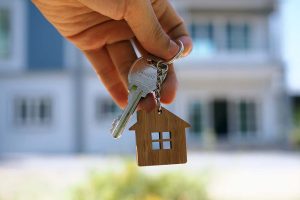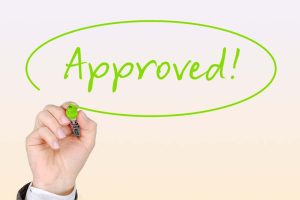The Covid years have brought a sea change in everyone’s life. Along with homeschooling and the work-from-home office, there have been seismic changes in the real estate landscape across the country. What started out as a nail-biting lockdown in March of 2020 has turned into a real estate boom for homeowners.
Equity in primary residences has sky-rocketed leading many homeowners to sell their homes and traverse the country with pockets of cash to walk a different path. Some of those homeowners have chosen to utilize their newfound wealth by tapping into that equity to make home additions, finally put in that pool, buy second homes, or invest in real estate.
What was once a much coveted and protected nest egg, home equity has now become a useful tool to move the needle on their bucket list items. Whether that means a home remodel or a house at the beach, many homeowners are now house rich beyond their dreams.
But how are these homeowners getting their hands on this money? One little word — HELOC. Home Equity Lines of Credit are the homeowner’s way of utilizing the rise in value of their primary residences. Banks across the country saw a spike in applications for equity lines of credit. Those applications have turned into credit lines that, in general, have a ten-year term, can be interest only, and are attached to a credit/debit card and/or a checking account along with a checkbook.
Homeowners have bought second homes, investment properties, and improved their own homes. Not only is this possible for the average American who owned a home during the pandemic, but it has also become a common practice. In fact, real estate investors have started to use their HELOCs as an infinite banking vehicle. An infinite banking vehicle is what many high-net-worth individuals use to circumvent the retail banking system by withdrawing funds from a tax-advantaged asset to leverage funds and profits to scale their wealth.
A good example of an infinite banking vehicle is whole life insurance. Whole life insurance creates a cash value that can be borrowed against as a loan. Those funds come to the policyholder tax-free and do not have to be repaid. If never repaid, the face value of the policy can be reduced if a death benefit is paid out. Alternatively, the policyholder could pay interest payments on the borrowed funds to keep the policy from cannibalizing the remaining cash value generated by continued premium payments to pay the interest-only payment, or the policyholder could simply repay the loans in full. As premiums are continued to be paid over the course of the policy’s ownership, the policy will continue to generate cash value and grow, thereby allowing the policyholder to borrow again and again so long as the cash value accumulates in the policy.
This concept correlates to the usage of a HELOC by homeowners. Home values have increased, which means that equity has increased. Banks are happy to extend lines of credit on these properties because, as mentioned earlier in this article, many homeowners sold their properties, making great profits and used that money to pay over asking price in cities such as Austin, Boise, Nashville, Charleston, Bozeman, and Denver.
This overpaying in the real estate market led to new home values that were supported by appraisals of properties purchased for cash in record numbers. Residents of states like California, New York and Illinois took their profits and relocated to low-income tax or no-income tax states. In turn, property owners all over the United States suddenly found themselves living in homes they previously could not have purchased. Thus, these newfound “house rich” homeowners started scaling their homeownership with HELOCs.
While the benefits of HELOCs can make one heady, there are drawbacks to be considered. One, homeowners are tying up their equity in properties without equity by purchasing for cash. Thus, two properties are tied up with the utilization of the HELOC from the primary residence. Two, the interest payments on these lines of credit can be large. Three, with the current market conditions due to 40-year high inflation, rising interest rates, and the housing market cooling, it is yet to be seen if home values will drop below the appraised values needed to support those HELOCs.
However, for those homeowners that purchased investment properties, the good gets better. Using their HELOCs to purchase income-producing properties allows them to repay their HELOC and make a profit. Moreover, after a few months of rent rolls, those homeowners can now refinance the investment properties and repay the HELOC, leaving only enough of the equity on the table to meet the requisite 20-25% down payment for a second home or investment property.
For those that see this unique utilization of their home’s equity can quickly scale a real estate portfolio to several properties in a short amount of time. For the investor looking for passive income, using real estate to leverage itself allows that investor to receive monthly profits in a tax-advantaged investment vehicle.
Taking into consideration the real estate’s appreciation, the ability to depreciate the real estate, using the deduction available to the investor under Sections 162 and 163 of the Tax Code, investors would be wise to sit down with their financial advisors to discuss real estate as an addition to their investment portfolio.
Meeting with financial advisors will help the homeowner turned real estate investor to understand the formula needed to make an investment property cash flow positively. Learning about CAP Rates, market rental rates, financing options, and the difference between active and passive investors can be a hefty undertaking without the help of several different professionals.
For those looking to deploy their equity, create passive cash flow, garner greater tax savings, and diversify their investment portfolio, the HELOC checks all those boxes if used to purchase an investment property. If one simply wants to purchase a second home or vacation home, then the HELOC is also a step in the right direction. Regardless of the goal, utilizing that pent-up equity in a down market could yield greater dividends for investors for years to come.
This article was originally published on New York Weekly.




